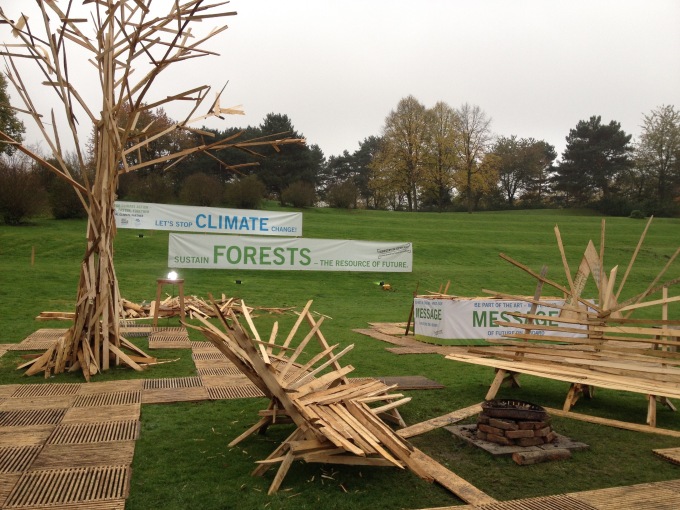
Bonn, Germany 10/11/2017
There is a rather strange installation on the long route between the venue ‘Bula’ (where the negotiations happen) and the venue ‘Bonn’ (where the many interests push their agenda through stalls and displays). Ex-forest, now converted into timber, is re-assembled to create a tree in a park, with benches and a cosy fire place. Signs advise passers-by to stop climate change and sustain forests.
On first impressions, this seems like an innocent attempt to promote action on emissions. A more detailed reading reveals the contradictory attitudes towards forests in climate policy making: the belief that we can save the forests by logging them, and combat climate change at the same time. Or even stranger, that we can burn them for power, and brand this as ‘green’ energy.
Confused? So too are the negotiators. Deforestation and forest degradation constitute as much as twenty percent of global forest emissions. Intact forests provide far more value to the planet if they are left in the ground, rather than being converted into cheap throw away products that sooner or later end up being burnt, or sent to landfill. The most logical thing to do, from a carbon conservation perspective, is to allow them to become stable, mature forests, capable of generating a whole suite of ecosystem services, including soil conservation, habitat for threatened species, and water purification.
There will always be a role for timber in society. It is easy to work with, has good thermal properties for insulation, and is far more environmentally friendly than steel or concrete. But in acknowledging this, let’s not lose sight of the forests for the trees – or carbon.